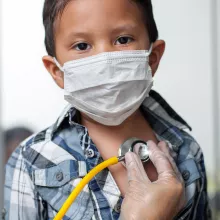Publications Menu
Summary: Breastfeeding can reduce breast cancer risk, both in the practice of breastfeeding and the duration of time a person breastfeeds, with longer durations associated with increased benefits. However, several racial/ethnic communities with higher rates of breast cancer are also those with lower rates of breastfeeding.
One strategy for reducing racial/ethnic inequities in breast cancer rates centers on improving breastfeeding rates, particularly among Asian, Black, and Native Hawaiian and Pacific Islander (NHPI) populations.
To improve rates of breastfeeding, we seek to understand the attitudes toward breastfeeding within these communities, perceived barriers to breastfeeding, and resources that are available to help people effectively breastfeed, as well as recommendations that can positively impact the number of people who choose to breastfeed and the duration of time that they engage in breastfeeding their children. Specifically, we seek to answer the following research questions, particularly as they apply to the Asian-American, Black and Native Hawaiian and Pacific Islander (NHPI) communities.
- What policy interventions could increase awareness of breastfeeding as a way to reduce breast cancer risk among the public and medical community?
- What policy interventions could state or local governments adopt to increase support for breastfeeding where women live, work, learn, worship and play?
- Are there roles for community health clinics and other non-governmental organizations to support new policy interventions or implement existing or potential policies?
Our approach to this study included three main tasks: (1) Literature and Legislation Review, (2) Recruitment of Advisory Board and Key Informants, and (3) Interviews with Key Informants: providers, community advocates and breastfeeding people.
Read the Publications:
- Policy Research Report: Reducing Barriers to Breastfeeding in Disadvantaged Communities
- Policy Note: Reducing Breast Cancer Risk Through Improved Workplace Accommodation
- Policy Note: Reducing Breast Cancer Risk Through Better Family Leave Policies
- Policy Note: Reducing Breast Cancer Risk Through Access to Lactation Specialists













